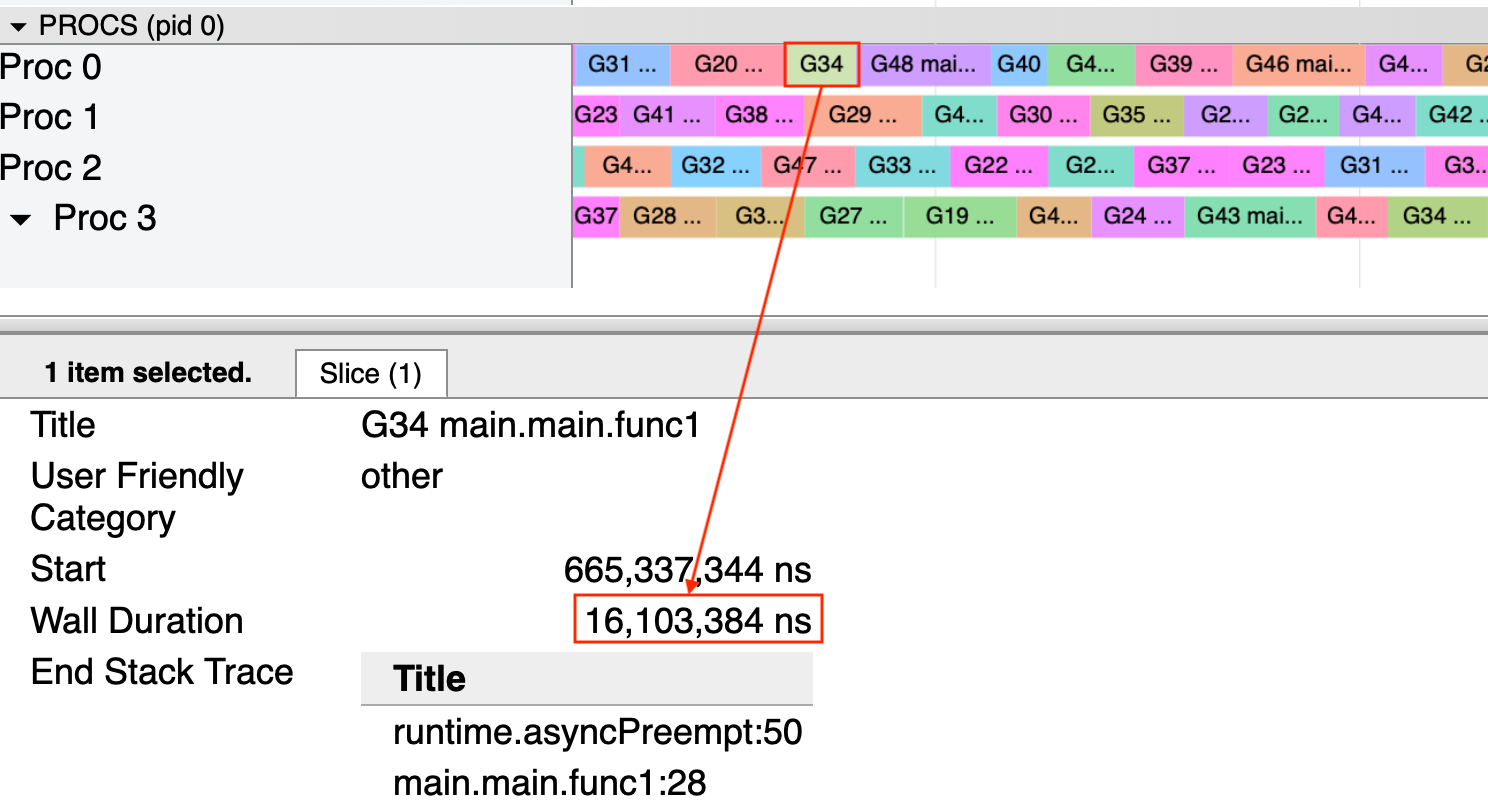ℹ️ This article is based on Go 1.14.
The preemption is an important part of the scheduler that lets it distribute the running time among the goroutines. Indeed, without preemption, a long-running goroutine that hogs the CPU would block the other goroutines from being scheduled. The version 1.14 introduces a new technique of asynchronous preemption, giving more power and control to the scheduler.
For more details about the previous behavior and its drawback, I suggest you read my article “Go: Goroutine and Preemption.”
Workflow
Let’s start with an example where preemption is needed. Here is a code where many goroutines loop for a while without any function call, meaning no opportunity for the scheduler to preempt them:

However, when visualizing the traces from this program, we clearly see the goroutines are preempted and switch among them:

We can also see that all the blocks representing the goroutines have the same length. The goroutines get almost the same running time (around 10/20ms):

The asynchronous preemption is triggered based on a time condition. When a goroutine is running for more than 10ms, Go will try to preempt it.
#internal #go #golang
